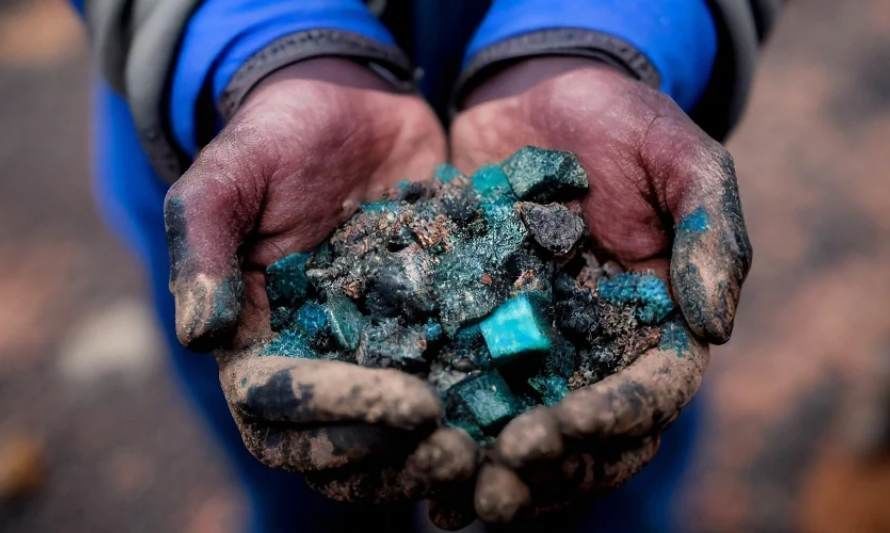Invest in Chile
Por Agustín de Vicente , 13 de diciembre de 2023 | 01:02Chile aims to become the world’s second-largest cobalt producer

The ANID scientific and environmental project awarded to Universidad Andrés Bello and Universidad de Chile aims to produce 15,000 tons of ‘blue gold’ annually.
In addition to boosting demand for lithium, the electromobility boom is expanding demand for other elements critical to the energy transition, including cobalt.
Chile has significant quantities of this mineral in its mining tailings, which could make it the world’s second-largest producer, reported Qué Pasa magazine.
The raw material, also known as blue gold, is crucial for manufacturing lithium-ion batteries for electric vehicles. It prolongs battery life, reduces their size and prevents overheating.
Global production
The Democratic Republic of Congo is currently the world’s leading cobalt producer, with 145,000 metric tons produced in 2022, according to the Cobalt Institute. Indonesia is second, with significantly less production (approximately 9,500 metric tons).
«Just by extracting the cobalt in the tailings, Chile could displace Indonesia to become the world’s second-largest producer,» says Pilar Parada, Director of Universidad de Andres Bello’s Center for Systems Biotechnology (CSB UNAB).
This is according to a study by Brian Townley, a researcher at the Universidad de Chile’s Advanced Mining Technology Center (AMTC-UChile). Chile’s Economic Development Agency (CORFO) and National Geology and Mining Service (SERNAGEOMIN) commissioned the study.
According to the research, in the medium term, Chile has the potential to produce 15,000 tons of cobalt from its tailings annually. Additionally, Chile can obtain the mineral in a cleaner way, with less environmental impact and lower production costs.
Green Cobalt in Chile Green cobalt is the idea behind one of the ten IDeA Advanced Technologies 2023 projects (part of the Economy Undersecretary’s Sustainable Productive Development program) that the National Research and Development Agency (ANID for the Spanish acronym) just awarded CSB UNAB, as the main institution, and AMTC UChile, as the secondary institution.
The project aims to use biotechnology to reprocess tailings and recover the cobalt therein.
This cobalt production method will also reduce the environmental risk currently posed by the mining tailings deposits, 86% of which are abandoned or inactive, according to a 2022 Sernageomin survey.
It would also mean additional funding for Chile. Given the potential production based on the project and production from tailings and mines, at an average price of US$44,700 per ton, the country’s annual income would be about US$1.1 billion.
«Moving towards ‘green cobalt’ is more than an economic opportunity. It is a bold step toward a cleaner, more socially responsible future, where economic prosperity merges with environmental protection and societal well-being,» said Ms. Parada, the project director.
Townley, the project’s alternate director, remarked, «This is also an opportunity to diversify the economy, attract foreign investment and promote the adoption of cleaner and more sustainable technologies.»
Improved Quality of Life for Communities
The researcher, who also works in the Universidad de Chile’s Geology and Mining Engineering departments, added that in the social realm, «It could improve the quality of life for the communities surrounding cobalt operations
by creating jobs, developing specialized human capital and improving infrastructure and basic services.»
According to International Energy Agency (IEA) projections, global cobalt needs are expected to increase by 207% between 2022 and 2050.
The biomining project aims to obtain cobalt through bioleaching, which uses specialized microorganisms to solubilize minerals like pyrite, with which cobalt is associated in tailings.
COMENTA AQUÍ


